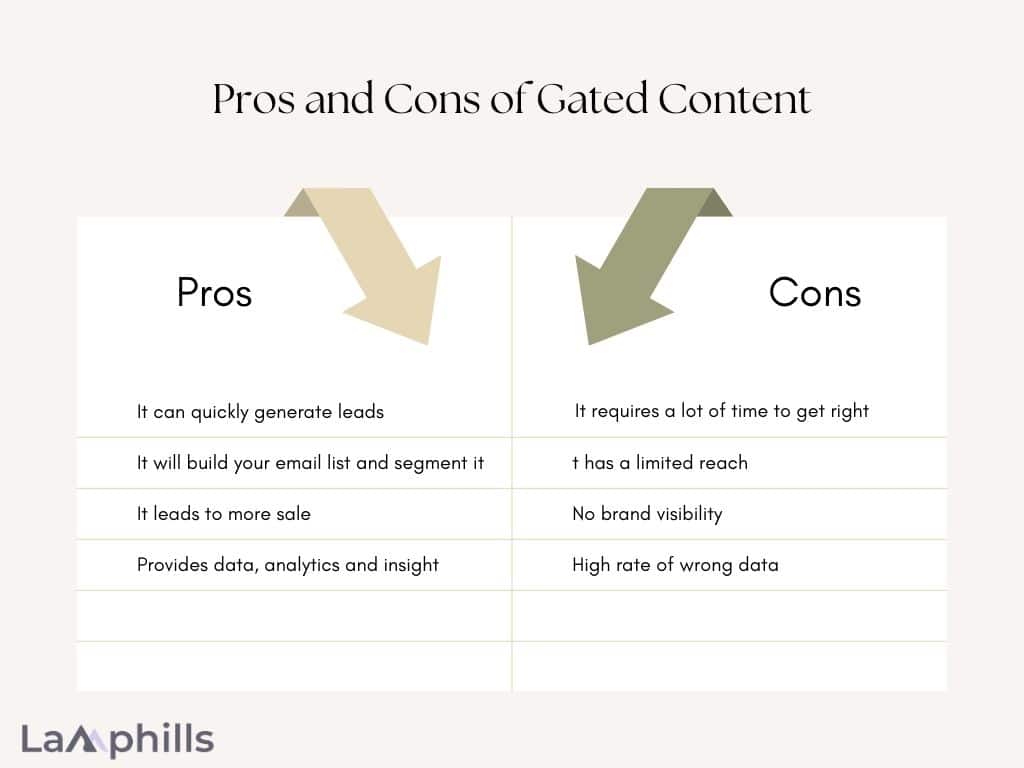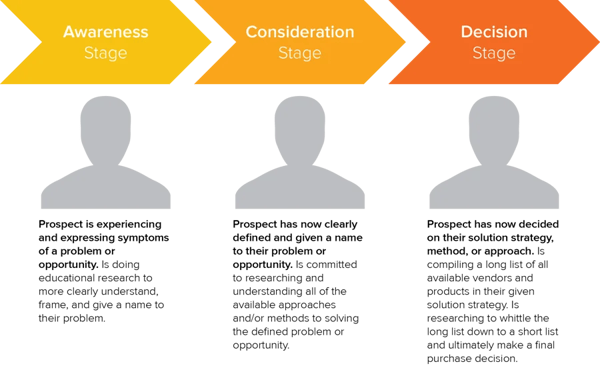For you to be here, it probably means that you are asking the same question I once asked: do we just give our content away, or should we request something in exchange for the content? I mean, why would you put so much effort into creating a masterpiece just to give it away? It’s not selfish to want to get more out of them. So you searched around and discovered “gated content, and now you want to know what it’s about. I will be your guide.
As a content creator, I have once been in your shoes. I have researched, practiced, and also reached a conclusion. So walk with me while we discover the best way to put your value-filled content out there.
Key Points
- Gated content is accessible only after user information is provided, often used for lead generation.
- Ungated content is freely accessible content aimed at increasing brand awareness and improving SEO.
- Gated content helps generate leads but might reduce the reach; ungated content boosts traffic and brand visibility.
What is Gated Content?
Circling back to this, gated content is a type of content that can only be assessed by a reader after releasing some piece of information about them. It’s just like your readers pay for your content, but instead of a credible currency, they pay with data. One can also say that it is online material that requires users to fill out a form with required details (like their name, job title, and company) to access and use gated content. This gated content may be in the form of interactive reports, webinars you can watch live or replay later, and downloadable white papers and ebooks.

I have also noticed that this form of content is a widely used marketing strategy. Some companies that regularly publish on their blogs adopt this strategy. They make some contents accessible to all, and then only to those who decide to pay for them with their data. All you need to do to make this work is add a pop-up or a credible CTA that will make the users want to release their data just to have the information.
It still doesn’t change that the sole goal of this gated content is to generate leads. I have seen many marketers go out of their way to create targeted content for their audience and then use it to attract leads.
Don’t forget that while gated content is solely for lead generation, ungated content is for the sole purpose of increasing brand awareness and improving SEO. Ungated content could come in the form of blog posts, infographics, or YouTube videos.
Pros and Cons of Gated Content
While you might be interested in adopting the gated content strategy, my main aim is to educate you on both the good and bad sides of the term, because choosing whether to gate your content isn’t as simple as knowing if you want more leads.
Because I have been in this position before, I want you to be fully aware of what you are going into, balancing both the pros and the cons that come with it.

Like I mentioned earlier, gated content can only help you generate leads that you can further nurture into potential clients through your marketing strategies, while ungated content will give you the same results as your other contents, which include increasing traffic, awareness, and trust between your users.
From experience, both of them have their own special roles and can both be included in your content marketing strategy.
When Should I Gate My Content?
This is the tricky part of the process and I have had quite a number of clients ask me this, but here we don’t gatekeep, so I will walk you through on when exactly you should.
#1. When It’s Extra Special Content
Just like the popular Igbo cuisine in Nigeria called Ukwa, which is been served to VIP’s on special occasions, that’s the same way you should save your best contents to be gated. Especially those contents that took you days to create until it were molded into perfection, that’s the perfect way to know when to gate your content.
#2. In-Depth Guides and Resources
Contents with extensive and professionally written insights are best categorized under gated content. Gating long-form piece content like comprehensive guides, ebooks, or webinars that dive deep into a topic can be a great idea. It will be easier for your readers to share their data in exchange for a valuable content.
#3. Valuable Tools and Templates
Practical tools, templates, or checklists can also pass for gated contents. It’s a handy tool and your users will find it valuable, especially if it solves real problems or serves as an extra help to a content they just read. Users will definitely give off data if it will make life easier for them.
#4. Building Your Email List
If you have an interest in building your email list then lead generation should be your thing. And in this case gating your content can help you get information on your customers to build up your email list and possibly have a good amount of conversions.
#5. When You’re Testing Waters
To help you stimulate this factor, just think of gating content as trying new food recipe, you will want to try the food in a small quantity just to know if you will have enough turn up or interest before you make in big batches. Same thing goes for your gated content. If you end up with a content you think people will like to give off information just to get, then you can experiment by putting it out there. Do this until you find the one they blend with the most.
Best Practices for Gated Content
Once you’ve decided to create a piece of gated content, you’re probably curious about how to get started. I will review some best practices below:
#1. Create content for each stage in the buyer’s journey
When creating your content, you should be intentional. You need to put into consideration the exact journey your customers take from visiting your website to agreeing to fill in their information. It might interest you to know that when a prospect goes through a buyer’s journey, they actually go through three stages: awareness, consideration, and decision.

Under each stage, you will make sure you have a clear instruction that leads them to the next stage. Processes like this can be somehow boring and you don’t want to get caught in the chase. If your gated content is aligned with their journey, your audience is more likely to convert.
#2. Complete a competitive analysis
To understand how well to gate your content, you need to check on your competitors. You will need to settle down and conduct an explicit research on your competitors to understand the type of content they put up for free and the ones they gate. Doing this will give you a good idea on the type of content to put up as well.
This will help you as a beginner, especially if you are confused or overwhelmed on how to pick a gated content.
#3. Provide value
As an inbound marketer, I will tell you for free that providing value in whatever content you put out there is highly important. Your gated content has to have value for your user to see the importance of giving off any information just to have it. Don’t only provide basic blogs, they can access that anywhere, give something more actionable. Something more worthy.
#4. Create and Optimize Your Landing Page
A good landing page should minimise distractions whole compelling your reader or audience to take necessary actions you need from them. So for that to work, you have to create the landing page well. You will also need to include some important features your landing page should have according to what you are trying to achieve. In this case, your landing page will include a form where visitors can input their contact details in exchange for your content offer.
Your form should be easy, straight-forward and user friendly to navigate and fill out, you don’t want to make your audience give up half -way.
#5. Segment your audience
If your reader has successfully filled out their details and given out their email, don’t be relaxed just yet, because there is more work to be done. This is where segmentation comes in. You will need to segment their info, including their email list. This will help you develop email marketing campaigns that are targeted and effective.
Aside that, segmentation can come in handy when you need to turn your leads into prospects.
#6. Promote Your Gated Content
This is another big practice that should not be overlooked. Aside from just putting your gated content out there, you need to promote it too to drive more leads. You can do this by online advertising or even email marketing which I already mentioned above.
#7. Measure Performance and Refine
When you have successfully followed these practices and your gated content is now on air, you need to follow up, refine and measure the performance on the supposed content. While on this, have it at the back of your mind that the primary goal of this content is to generate lead. It’s important to track key metrics such as conversion rates, bounce rates, and time on page. This will help you detect a progress when you see one.
This FREE checklist of mine will help keep your steps on check!
Gated Content.Pdf
Examples of High-Performing Gated Content
It’s safe to say that almost anything can be tagged a gated content, as long as it sits behind a lead capture form. But don’t be mistaken cause some types of content will surely perform more than the others. Here are a few of those on my list:
#1. Free Templates
Just the word “free” will get your readers up and doing so as to not miss out on a free offer. Some readers actually go the extra mile to pay for templates, then imagine they came across your blog and they see it’s been offered to them for free? They will surely jump into the offer. Across our blogs, you will also see we do same 😊
Some of the most popular gated templates and tools include:
- Calculators
- Accounting and budgeting spreadsheets
- Presentation templates
- Workbooks
- Document templates in specific formats, like CVs or cover letters
#2. White papers
Another great example is white papers. A white paper is simply a document that educates a prospects about technical or complex topics and proposes solutions. They are mostly long-form pieces and readers tend to find it interesting, telling from experience.
A white paper entails a lot of valuable information in a complex topic, hence it can serve as a gated content.
#3. Ebooks
You must be conversant with ebooks, which simply means electronic books. People usually pay a fortune to have this written for them. Imagine you write an explicit ebook on a popular topic and put it out there as a gated content. You will surely end up with tons of information begging to be taken.
Usually, ebooks are used in the awareness and consideration stage of the buyer’s journey.
#4. Webinars
Webinars are more direct. It allows you to speak with your audience either via a chat function or a question and answer session. Did I also forget to add that it can also be a great form of engagement. This form of content can be gated with great reward upfront.
A secret you might want to hear?, this type of content can be gated multiple time. First is by creating a form to gather leads before the event, and then promise to notify them. The second? this should be carried out after the webinar. It should be a recording of the webinars made available to the audience after the webinar must have passed. They will then need to fill up the form to access it.
#5. Subscriber-Only Emails
This type of gated content is also a good way to attract leads. Creating a value filled content for just your subscribers will help you target more audience to want to be on that list. People hate the idea of missing out. They won’t hesitate giving out their email address for a piece of content.
#6. Product Demo
This is a popular type of gated content we cross paths with all the time. It is also mostly used by software companies that needs to walk its leads through a free demo on their new products and probably how to use it.
This can be quite beneficial for nurturing relationships and convincing prospects to take the next step.
What’s Your Excuse?
Gated contents has helped multiple business generate solid leads using their most valued content forms as a clickbait. If done right, it can consistently drive leads at every stage of your funnel and eventually help you meet your business goal. I have done a great job by including every tip you need to know as a newbie in this niche, so what’s your excuse? If you are ready to try gated contents, remember to give value and also use the right content examples.
Related Articles
- Content Development Best Practices for Higher Engagement
- Product Launch Press Release: How to Write With Examples
- Digital Marketing Funnel Mastery: The A-Z Training to More Sales and Subscribers
- The Unconventional Public Relations Team Playbook That Skyrocketed Our Startup






